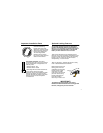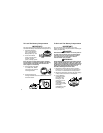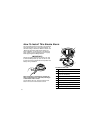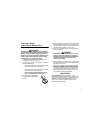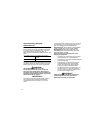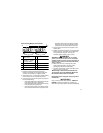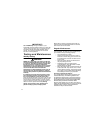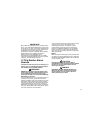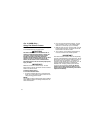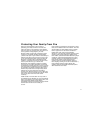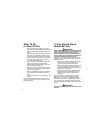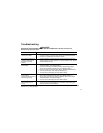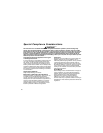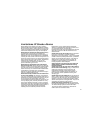
20
Special Compliance Considerations
WARNING!WARNING!WARNING!
This unit alone is not a suitable substitute for complete fire detection systems in places housing many
people—like apartment buildings, condominiums, hotels, motels, dormitories, hospitals, long-term health
care facilities, nursing homes, day care facilities, or group homes of any kind—even if they were once single-
family homes. It is not a suitable substitute for complete fire detection systems in warehouses, industrial
facilities, commercial buildings, and special-purpose non-residential buildings which require special fire
detection and alarm systems. Depending on the building codes in your area, this unit may be used to provide
additional protection in these facilities.
The following information applies to all four types
of buildings listed below:
In new construction, most building codes require the
use of AC or AC/DC powered smoke alarms only.
AC, AC/DC, or DC powered smoke alarms can be
used in existing construction as specified by local
building codes. Refer to NFPA 101 (Life Safety Code)
or NFPA 72 (National Fire Alarm Code), local building
codes, or consult your Fire Department for detailed
fire protection requirements in buildings not defined
as “households.”
Single-Family Residence:
Single family dwelling, townhouse.
Multi-Family or Mixed Occupant Residence:
Apartment building, condominium. This type of unit
is suitable for use in individual apartments or
condos, provided a primary fire detection system
already exists to meet fire detection requirements in
common areas like lobbies, hallways, or porches.
Using this type of unit in common areas may not
provide sufficient warning to all residents or meet
local fire protection ordinances/regulations.
Institutions:
Hospitals, day care facilities, long-term health care
facilities. This type of unit is suitable for use in
individual patient sleeping/resident rooms, provided
a primary fire detection system already exists to
meet fire detection requirements in common areas
like lobbies, hallways, or porches. Using this type of
unit in common areas may not provide sufficient
warning to all residents or meet local fire protection
ordinances/regulations.
Hotels/Motels:
Also boarding houses and dormitories. This type of
unit is suitable for use inside individual sleeping/
resident rooms, provided a primary fire detection
system already exists to meet fire detection
requirements in common areas like lobbies,
hallways, or porches. Using this type of unit in
common areas may not provide sufficient warning to
all residents or meet local fire protection ordinances/
regulations.



